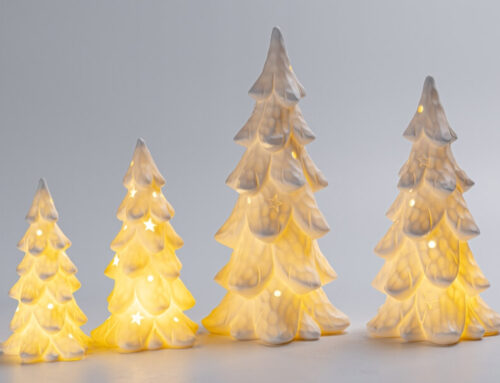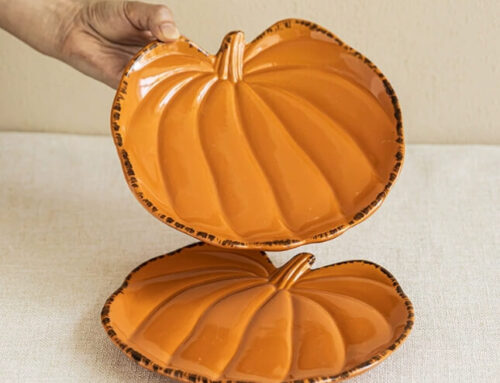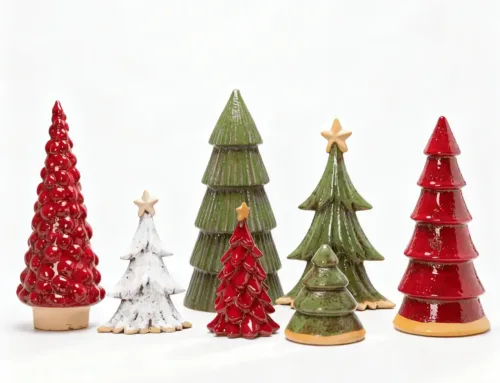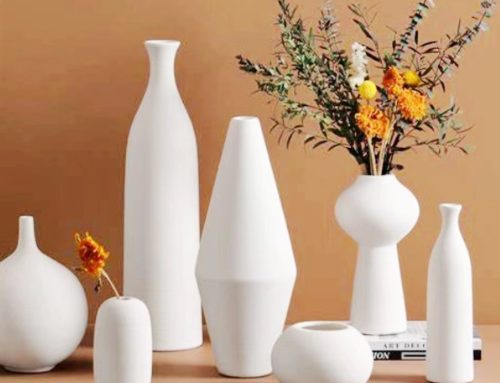Ceramics have been part of human life for thousands of years — from the humble clay pot to elegant porcelain vases. But not all ceramics serve the same purpose. Some are made to be used daily, like your favourite coffee mug or dinner plate; others are created purely for beauty, adding charm and personality to a space.
Understanding the difference between functional and decorative ceramics can help you make smarter buying decisions, whether you’re a distributor choosing new stock or a home décor lover picking the perfect piece for your living room. In this article, we’ll explore what sets them apart, how they overlap, and why both play a vital role in modern living and design.
1. What Are Functional Ceramics?
Functional ceramics are designed with practicality in mind. They are items that you use in daily life — things that hold, pour, serve, or store. In short, they do something.
Think of the mug you sip from every morning, the bowl you eat your soup from, or the baking dish that goes straight from oven to table. These are all examples of functional ceramics.
Functional ceramics must meet following characteristics:
-
Durability: They should withstand regular use, washing, and sometimes even heat from the oven or microwave.
-
Safety: They need to be food-safe, meaning they’re glazed with materials that don’t release harmful substances.
-
Comfort and design: They should feel good to use — comfortable handles, smooth rims, and balanced weight.
For example, Homey Ceramic’s stoneware mugs is sturdy enough for everyday coffee but also stylish enough to impress guests.
2. Examples of Functional Ceramics in Daily Life
Functional ceramics are all around us, often unnoticed because they’ve become essential to our routines. Here are some common categories:
Tableware
Plates, bowls, mugs, and serving dishes — these are the stars of any dining setup. Tableware ceramics balance practicality with visual appeal. A good dinner plate isn’t just flat; it’s designed with the right size, curve, and weight for comfortable use.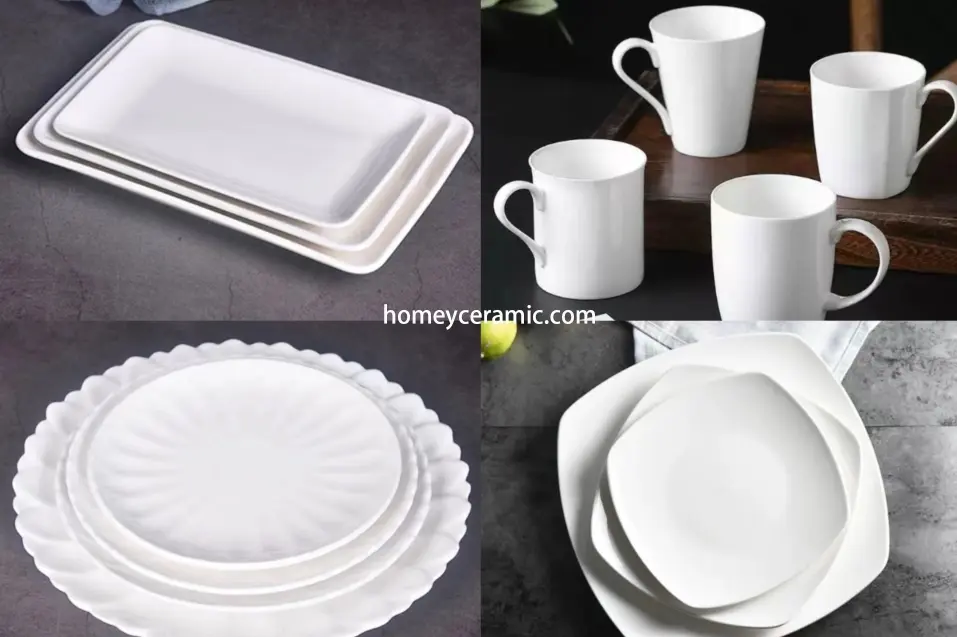
Cookware and Bakeware
From ceramic casserole dishes to baking trays, these products are heat-resistant and crafted for the kitchen. Many modern ceramics can handle temperature changes without cracking, making them ideal for both cooking and presentation.
Storage Jars and Containers
Functional doesn’t have to mean plain. Ceramic spice jars, sugar bowls, and canisters combine usefulness with elegance, keeping your kitchen both tidy and stylish.
Vases and Plant Pots
Interestingly, some ceramics straddle the line between functional and decorative. A vase, for example, serves a purpose — holding flowers — but is also valued for its shape, glaze, and design.
3. What Are Decorative Ceramics?
Decorative ceramics, as the name suggests, are created for aesthetic enjoyment. They may not serve a practical purpose beyond beautifying a space or expressing creativity.
These pieces can range from handcrafted figurines and ceramic Christmas trees to large ornamental vases. The focus is on design, texture, and artistic expression rather than utility.
Decorative ceramics often showcase:
-
Artistry: Each piece reflects the maker’s creativity and craftsmanship.
-
Cultural influence: Many designs draw inspiration from regional traditions — Moroccan patterns, Nordic minimalism, or Japanese simplicity.
-
Emotion: Decorative items can evoke feelings of nostalgia, warmth, or luxury.
For instance, Homey Ceramic’s Christmas collections — featuring Santa figurines, snowmen, and festive plates — are designed to spark joy and create a holiday atmosphere rather than serve a daily function.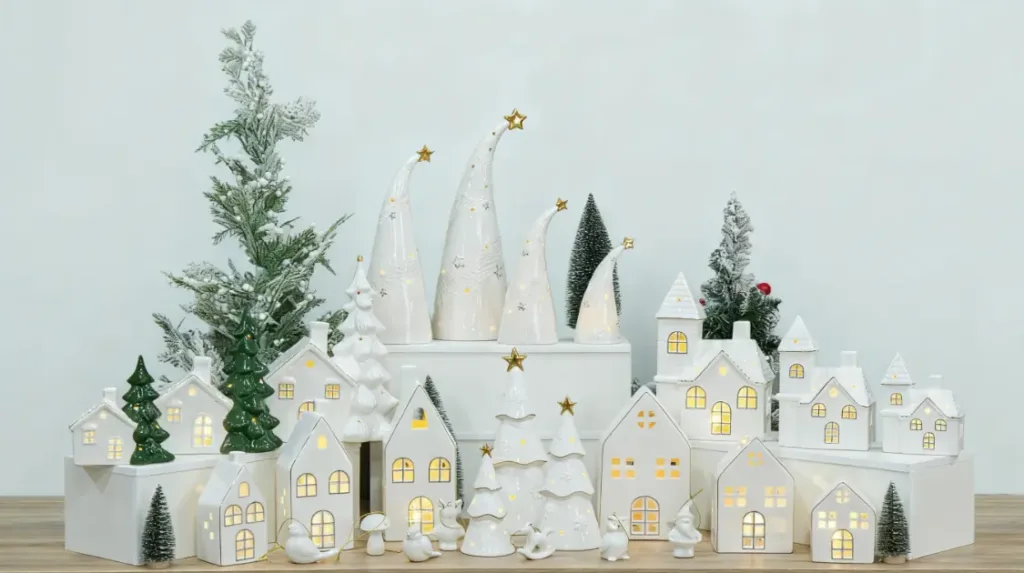
4. The Key Differences Between Functional and Decorative Ceramics
Although both are made from clay, glaze, and fire, their purpose, production, and perception differ significantly.
| Aspect | Functional Ceramics | Decorative Ceramics |
| Main Features | Strong practicality, focused on daily usage functions | Primarily aesthetic, focused on artistic and decorative value |
| Uses | Plates, bowls, mugs ,cookware, and bathroom products, etc. | Sculptures, vases, figurines and artistic decor items, etc. |
| Design Focus | Durability, usability,and meets practical needs | Creativity, beauty, and artistic expression |
| Material Requirements | Strong, durable materials for daily use | Can use refined materials for visual appeal, not necessarily for heavy use |
| Water/Heat Resistance | Yes (suitable for pot,candles/incense heat) | No (not designed for wet or heat contact) |
| Maintenance | Easy to clean, wipe with cloth | Requires gentle dusting, avoid liquids |
In short: Functional ceramics are made to serve you; decorative ceramics are made to inspire you.
5. When Function Meets Art: The Best of Both Worlds
Of course, the line between functional and decorative ceramics isn’t always strict. Some pieces achieve a perfect balance of both — items that serve a purpose and look stunning.
Take a hand-painted dinner plate with gold accents. It’s entirely functional, yet it could also be displayed as an art piece. Or consider a ceramic teapot with intricate floral designs — it’s practical for serving tea, but also acts as a centrepiece during afternoon gatherings.
This blending of art and function is a key trend in modern interior design. Many homeowners and designers seek pieces that are both useful and beautiful. As a result, brands like Homey Ceramic are creating collections that bridge this gap — from marble-glazed mugs to textured Nordic vases that double as décor items.
6. Materials and Techniques: What Makes Each Type Unique
The materials and firing methods used can greatly influence whether a ceramic piece becomes functional or decorative.
Functional Ceramics
These usually rely on durable materials like stoneware or porcelain. They’re fired at high temperatures (above 1,200°C) to ensure strength and water resistance.
Glazes must be non-toxic and smooth, preventing bacteria build-up and ensuring food safety. Manufacturers often test for lead and cadmium content to meet international safety standards, especially for export to regions like the EU.
Decorative Ceramics
Here, the artist has more freedom. Materials like earthenware can be used to achieve unique textures and colours, even if the result is more fragile. Surface decorations might include hand-painting, carving, or gold leaf detailing — techniques that prioritise beauty over practicality.
7. Why Both Types Matter in Modern Living
Both functional and decorative ceramics bring value to our lives — in different but complementary ways.
Functional ceramics make everyday tasks easier and more pleasant. They connect us to traditions of craftsmanship while serving our daily needs.
Decorative ceramics, on the other hand, tell stories. They reflect personality, culture, and taste. A hand-glazed vase or a charming figurine can transform a plain room into a place with warmth and character.
For many people, ceramics also carry emotional meaning. A handmade mug from a loved one, or a festive decoration passed down through generations, becomes more than an object — it’s a memory made tangible.
8. The Sustainability Perspective
In a world increasingly conscious of sustainability, ceramics stand out as an eco-friendly choice.
Functional ceramics replace single-use plastic and disposable materials. A good-quality ceramic plate or mug can last for decades, reducing waste and promoting a more sustainable lifestyle.
Decorative ceramics, when made ethically, also support artisans and preserve traditional crafts. Many ceramic makers, including Homey Ceramic, use local clay and environmentally responsible glazing processes to minimise their ecological footprint.
9. Choosing the Right Ceramics for Your Space or Business
Whether you’re a retailer curating products or a homeowner decorating your space, understanding your goal helps you choose wisely.
-
For Everyday Use: Opt for high-quality stoneware or porcelain products that are food-safe and durable.
-
For Décor: Choose pieces that match your aesthetic — minimal, rustic, festive, or artistic.
-
For Gift Collections: Combine both types. A beautiful ceramic mug gift set or a festive ornament can serve both functional and emotional purposes.
Homey Ceramic offers customisation options for all kinds of ceramics — from elegant tableware to seasonal décor. You can select designs, glazes, and even packaging to suit your brand or customers.
10. Conclusion: More Than Just Clay and Fire
The difference between functional and decorative ceramics lies not only in their use but in how they enrich our lives. Functional ceramics bring comfort and reliability to everyday moments; decorative ceramics bring colour, emotion, and identity to our surroundings.
Together, they tell the story of how art and practicality can coexist beautifully.
Whether you’re a shop owner looking for versatile collections or simply someone who loves the feel of fine ceramics, it’s worth exploring both sides of the craft.
✨ At Homey Ceramic, we specialise in both — offering functional tableware, bakeware, and mugs that are as durable as they are beautiful, along with decorative vases, figurines, and seasonal pieces that bring every space to life.
👉 Explore our full range and discover how function and artistry can perfectly meet in your next collection.

